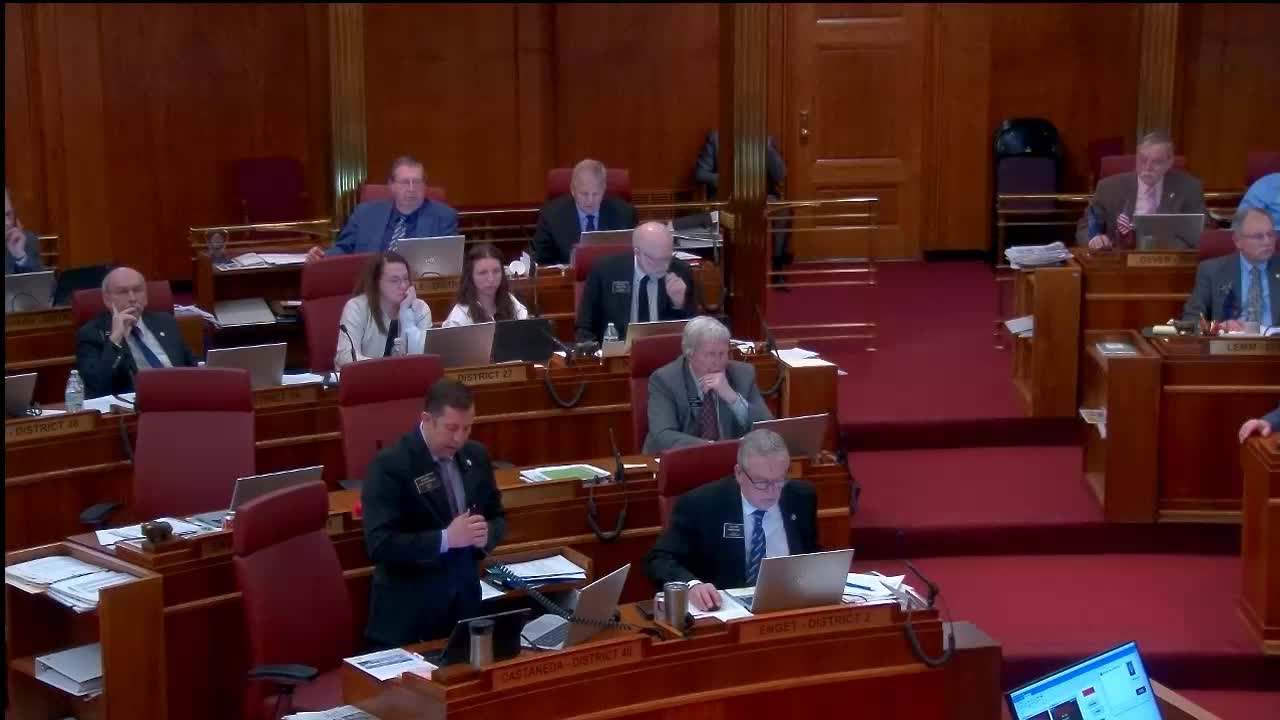State lawmakers define robot use in law enforcement with new comprehensive bill
April 11, 2025 | Senate, Legislative, North Dakota
This article was created by AI summarizing key points discussed. AI makes mistakes, so for full details and context, please refer to the video of the full meeting. Please report any errors so we can fix them. Report an error »

The North Dakota State Legislature convened for the 69th Legislative Assembly's Senate Floor Session on April 11, 2025, focusing on the implications of emerging technologies in law enforcement. The session, which lasted from 12:23 PM to 2:25 PM, primarily addressed a bill concerning the use of robots and artificial intelligence in policing.
The discussion began with an overview of the bill's intent to regulate how law enforcement can utilize autonomous and remote-controlled robots. Key definitions were established, distinguishing between "autonomous" robots, which operate independently, and "remote" robots, which require human control. The bill also clarified the definitions of lethal and less-than-lethal weapons, ensuring that these terms are well understood within the context of law enforcement operations.
A significant point of contention was the inclusion of various surveillance technologies. The bill explicitly states that law enforcement body-worn cameras, in-car cameras, and license plate readers do not fall under the definition of robots, thus exempting them from the new regulations. This distinction was made to prevent unintended restrictions on essential surveillance tools.
The session also outlined stringent warrant requirements for surveillance, emphasizing that the same legal standards apply regardless of whether a human or a robot is conducting the surveillance. This ensures consistency in law enforcement practices and protects citizens' rights.
As the discussion progressed, the bill addressed the use of lethal force by robots. It was made clear that while robots may operate autonomously to reach a location, any deployment of lethal weapons must be controlled by a human operator. This provision aims to prevent accidental discharges and ensures that lethal force is only used in situations where it is legally justified, such as imminent threats to life.
Furthermore, law enforcement agencies are required to adopt specific use-of-force policies that include guidelines for the deployment of unmanned aerial vehicles and robots. This requirement aims to standardize practices across agencies and ensure accountability in the use of advanced technologies.
In conclusion, the Senate Floor Session highlighted the balance between embracing technological advancements in law enforcement and safeguarding civil liberties. The bill aims to provide a framework for the responsible use of robots and AI, ensuring that law enforcement practices remain transparent and accountable. The next steps will involve further discussions and potential amendments as the bill progresses through the legislative process.
The discussion began with an overview of the bill's intent to regulate how law enforcement can utilize autonomous and remote-controlled robots. Key definitions were established, distinguishing between "autonomous" robots, which operate independently, and "remote" robots, which require human control. The bill also clarified the definitions of lethal and less-than-lethal weapons, ensuring that these terms are well understood within the context of law enforcement operations.
A significant point of contention was the inclusion of various surveillance technologies. The bill explicitly states that law enforcement body-worn cameras, in-car cameras, and license plate readers do not fall under the definition of robots, thus exempting them from the new regulations. This distinction was made to prevent unintended restrictions on essential surveillance tools.
The session also outlined stringent warrant requirements for surveillance, emphasizing that the same legal standards apply regardless of whether a human or a robot is conducting the surveillance. This ensures consistency in law enforcement practices and protects citizens' rights.
As the discussion progressed, the bill addressed the use of lethal force by robots. It was made clear that while robots may operate autonomously to reach a location, any deployment of lethal weapons must be controlled by a human operator. This provision aims to prevent accidental discharges and ensures that lethal force is only used in situations where it is legally justified, such as imminent threats to life.
Furthermore, law enforcement agencies are required to adopt specific use-of-force policies that include guidelines for the deployment of unmanned aerial vehicles and robots. This requirement aims to standardize practices across agencies and ensure accountability in the use of advanced technologies.
In conclusion, the Senate Floor Session highlighted the balance between embracing technological advancements in law enforcement and safeguarding civil liberties. The bill aims to provide a framework for the responsible use of robots and AI, ensuring that law enforcement practices remain transparent and accountable. The next steps will involve further discussions and potential amendments as the bill progresses through the legislative process.
View full meeting
This article is based on a recent meeting—watch the full video and explore the complete transcript for deeper insights into the discussion.
View full meeting
